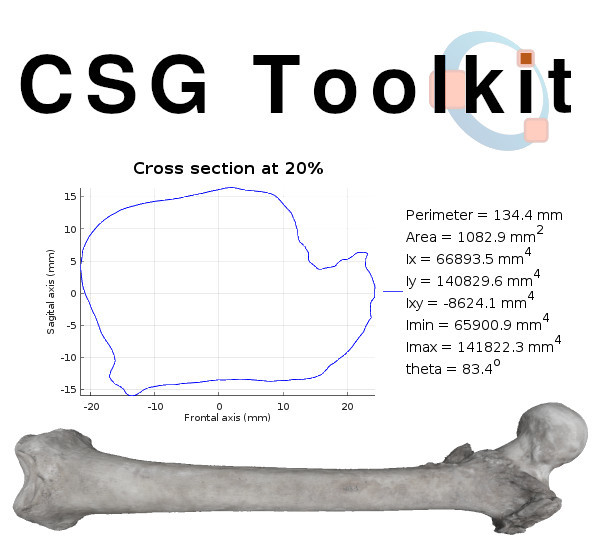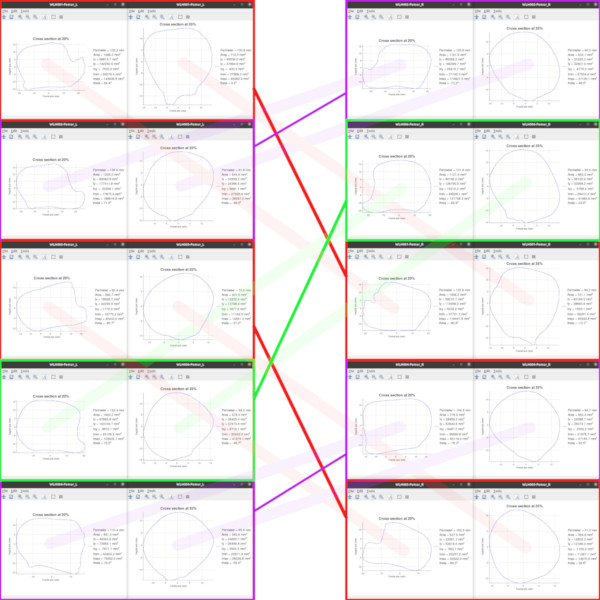long-bone-diaphyseal-CSG-Toolkit

Plotting a cross section and its corresponding geometric properties performed with the CSG Toolkit
A GNU Octave package for analyzing diaphyseal long bone cross sectional geometry
The CSG Toolkit comprises a set of functions which provide a robust algorithm for calculating the geometric properties of the diaphyses of the long bones of the lower and upper limbs. The CSG Toolkit can automatically analyze any complete femur, tibia, and humerus bone as long as it is available as a triangular mesh stored in Wavefront OBJ file format. For further background on the algorithm you may refer to the original publication "A novel method for analyzing long bone diaphyseal cross-sectional geometry. A GNU Octave CSG Toolkit" in Forensic Science International.
The latest version (v1.2.1) has relaxed the user's intervention for providing initial alignment points and the explicit requirement for single kind of bones for batch processing. It can handle automatic alignment without any pre-registration as well as fully determine the bone (i.e. femur, tibia, or humerus) in each individual 3D model file. The latter allows batch processing all samples in a single folder, which facilitates the process of visual inspection and results' aggregation for osteometric sorting or estimating sex.
The CSG Toolkit is free and open source software licensed under the GPLv3. You are welcome to download and install it from within the GNU Octave environment or you can visit the official repository at GitHub for more details.
pair-matching-skeletal-elements

Left and right femurs matched according to the similarities of their corresponding cross sections
A GNU Octave function for pair matching bilateral elements of the lower limbs.
The novel method for pair matching antimeres of femurs and tibias, which emerged from the "Human Jigsaw" project, is implemented in the sorting_BE function for the GNU Octave environment. The pair-matching method relies on a complex stochastic approach which evaluates the similarity/dissimilarity of the long bone diaphyseal cross sectional geometry between the left and right bone antimeres in order to accurately determine the correct matching pairs of individuals. Hence, the function can directly utilize the osteometric data saved in the CSV file generated by the inspect_CSG function included in the CSG Toolkit.
Furthermore, the pair matching algorithm relies on cross sectional descriptives, which are available for femurs and tibias based on the available skeletal material from the Athens Collection. As usual, sorting_BE function is free and licensed under the GPLv3. For further background on this pair-matching method and a thorough evaluation of its accuracy you may refer to the original publication "Advances in Osteometric Sorting: Utilizing Diaphyseal CSG Properties for Lower Limb Skeletal Pair-Matching" in Journal of Forensic Sciences.